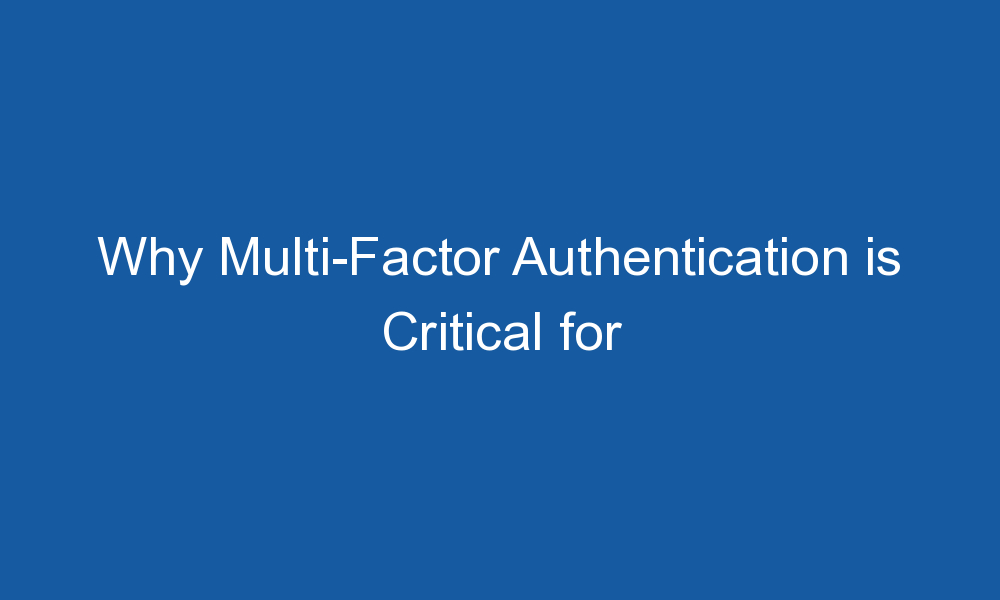Introduction
In today’s digital age, data breaches and cyber attacks are becoming increasingly common. As a result, businesses of all sizes must take steps to ensure that their sensitive information is protected from unauthorized access. One of the most effective ways to do this is by implementing multi-factor authentication (MFA). MFA provides an additional layer of security beyond the traditional username and password login method. In this article, we will explore the benefits of MFA and why it is critical for your business security.
What is Multi-Factor Authentication?
Multi-factor authentication (MFA) is a security mechanism that requires users to provide two or more forms of identification before granting access to an account or system. MFA adds an additional layer of security beyond the traditional username and password combination by requiring the user to provide another form of identification, such as a fingerprint or a security token.
Why is Multi-Factor Authentication Important?
MFA is important because it significantly reduces the risk of unauthorized access to sensitive information. With traditional username and password authentication, cyber criminals can gain access to an account by guessing the password or by using password cracking software. MFA makes it much more difficult for cyber criminals to gain access to an account because they would need to have access to the user’s physical device, such as a phone or security token, in addition to knowing the correct password.
How Does Multi-Factor Authentication Work?
MFA works by requiring the user to provide two or more forms of identification. The first factor is typically a username and password combination. The second factor can be something the user has, such as a security token or smart card, or something the user is, such as a fingerprint or retina scan. When the user attempts to log in to an account, they are prompted to enter their username and password. Once this information is verified, the user is then prompted to provide the second factor of identification. This could be a code sent to their phone or email, or it could be a biometric scan.
Types of Multi-Factor Authentication
There are several types of multi-factor authentication methods available, including:
- Something the user knows, such as a password or PIN
- Something the user has, such as a security token or smart card
- Something the user is, such as a fingerprint or retina scan
- Something the user does, such as a pattern or behavior
Conclusion
Multi-factor authentication is critical for your business
Additional Content
If you’re interested in learning more about MFA and how it can benefit your business, there are plenty of resources available online. Here are a few articles we recommend:

